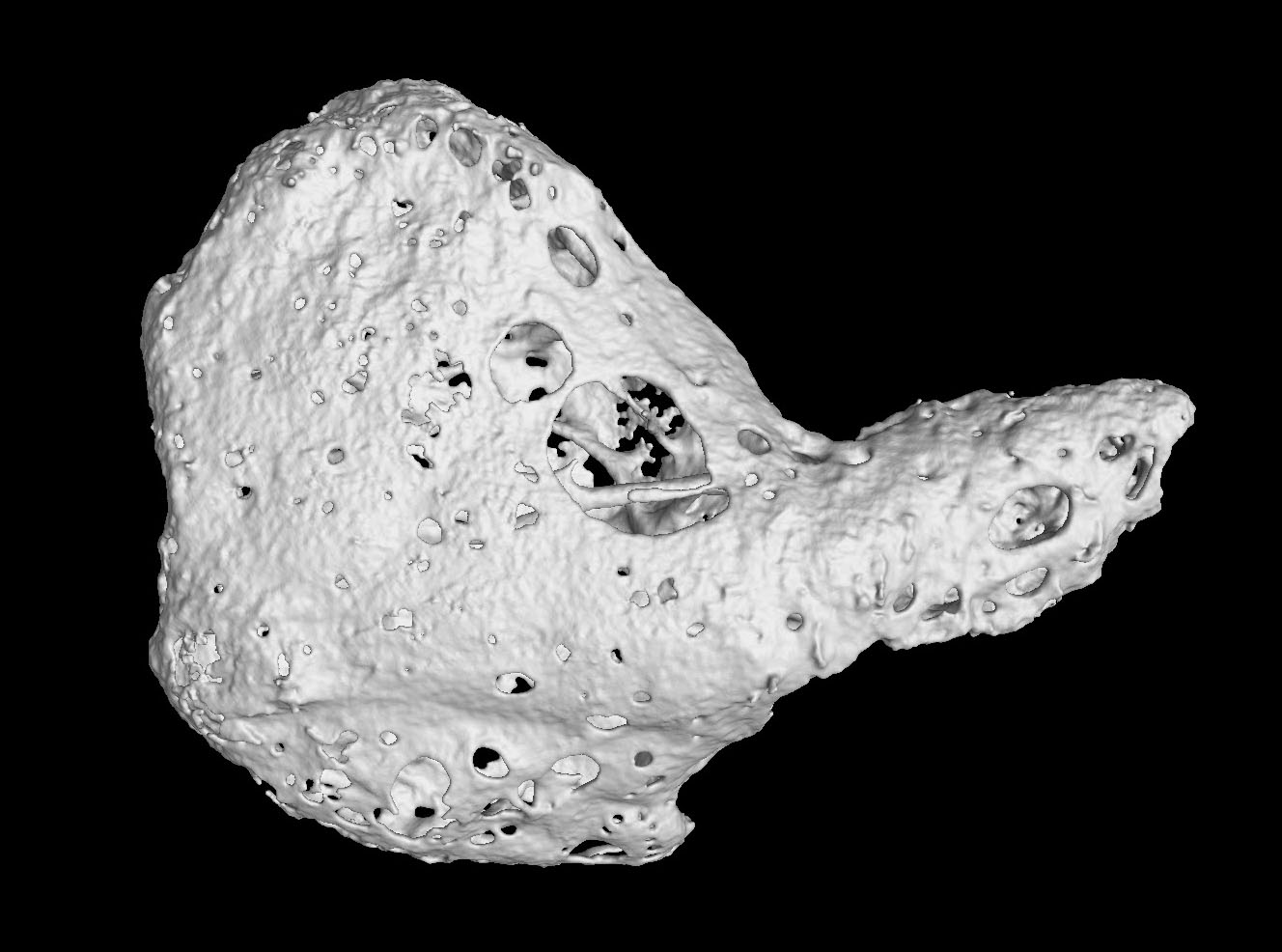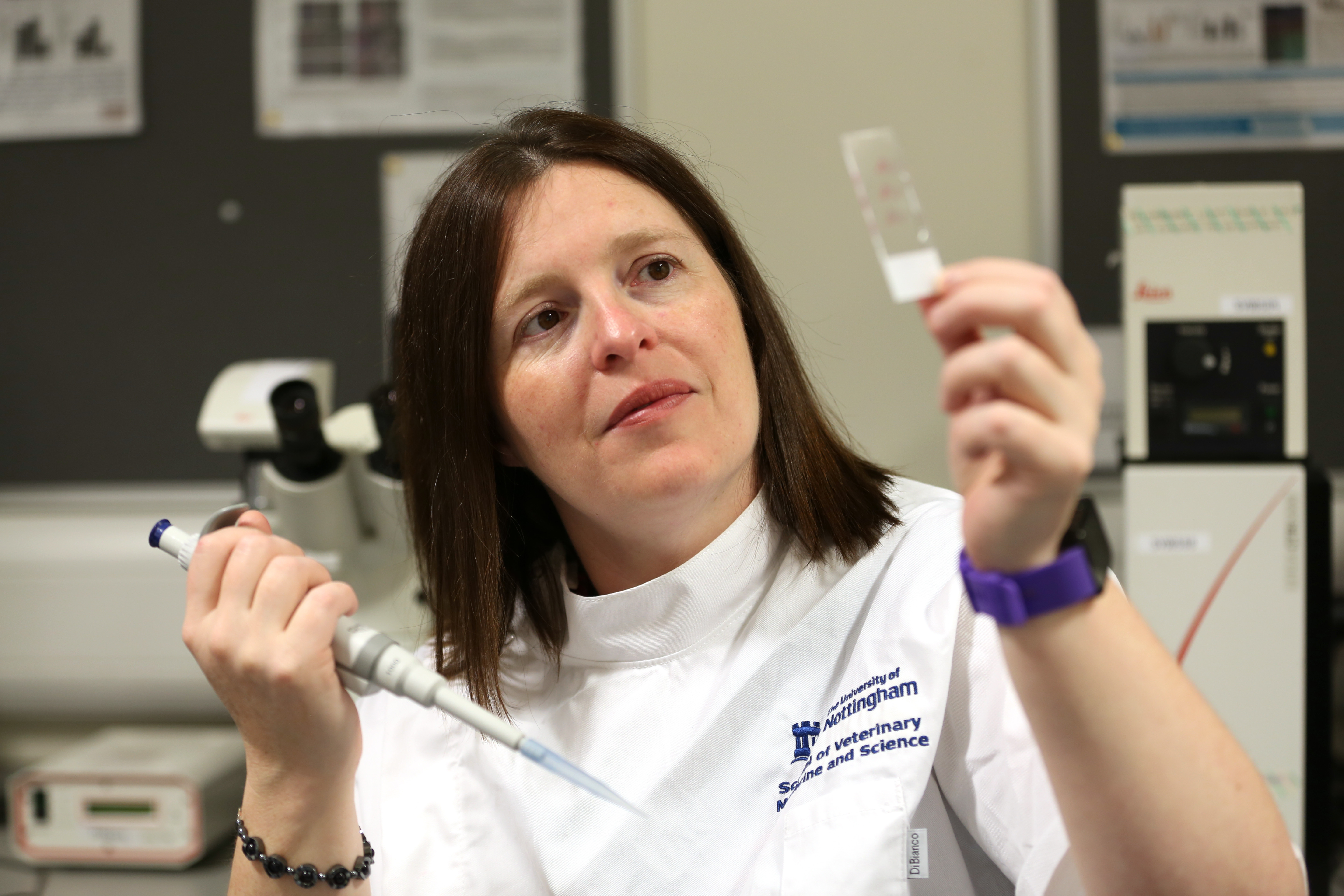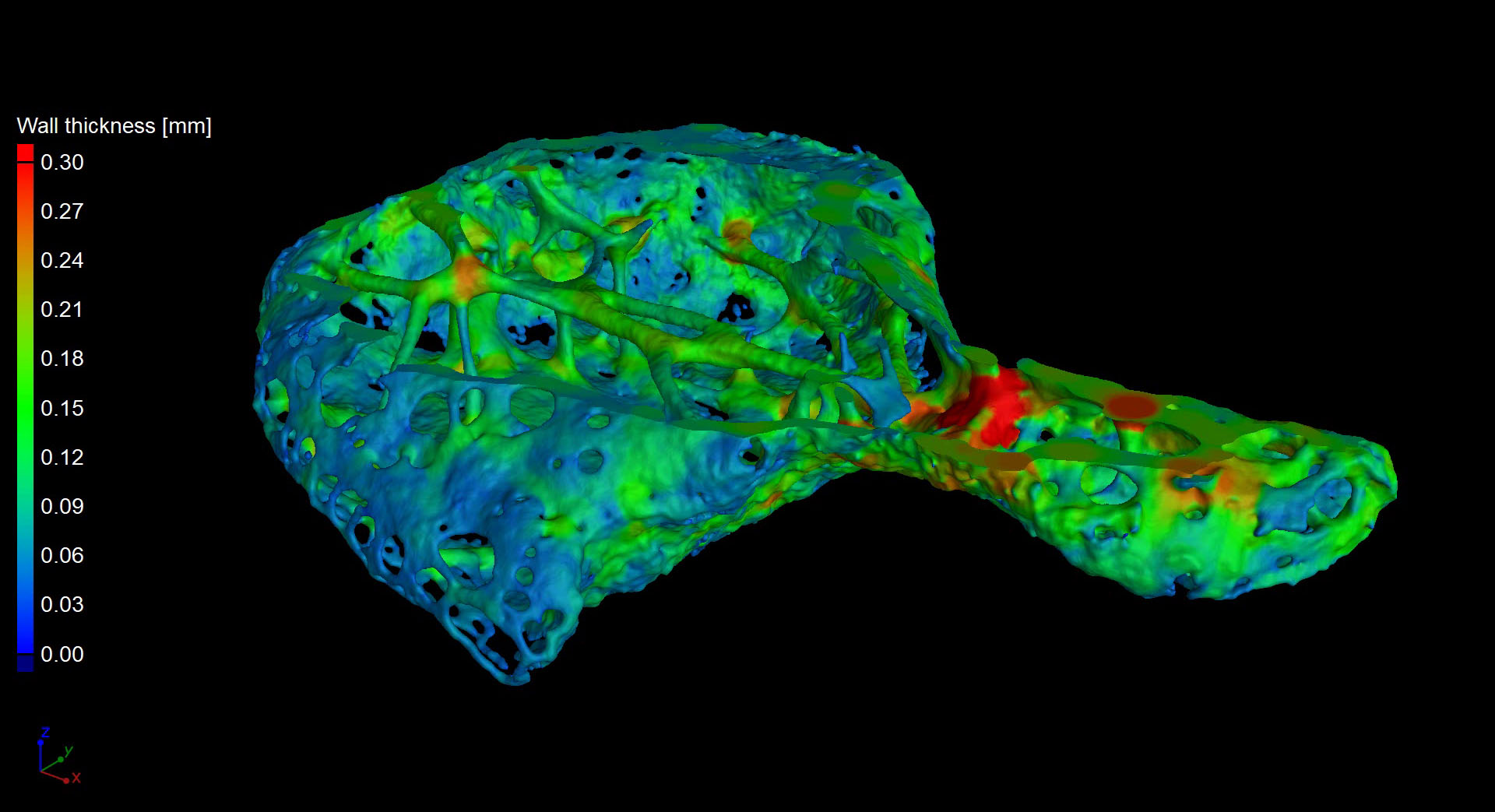Wednesday, 10 June 2020
Experts from the University of Nottingham have discovered that some chimpanzees have a bone in their heart, which could be vital in managing their health and conservation.
Very few species of animals have this bone – called an os cordis - therefore this is a particularly rare find.
The exciting research, which was carried out by experts from the University’s School of Veterinary Medicine and Science, is published today in Scientific Reports.
 Delving into the chimp os cordis
Delving into the chimp os cordis
Wild chimpanzees are endangered and cardiovascular disease is very common in this species. Understanding their hearts is vital in making medical advances and managing their health and conservation.
The tiny ‘os cordis’ heart bones, measuring a few millimetres in size, were more likely to be present in chimps with idiopathic myocardial fibrosis – a type of heart disease found in chimps and people. Myocardial fibrosis is the most common type of heart disease in chimpanzees and has been linked to the occurrence of cardiac arrhythmias and sudden death.
 Dr Rutland preparing microscope slides to look at the chimp os cordis in detail
Dr Rutland preparing microscope slides to look at the chimp os cordis in detail
“The discovery of a new bone in a new species is a rare event, especially in chimps which have such similar anatomy to people. It raises the question as to whether some people could have an os cordis too,’ said lead author Dr Catrin Rutland from the University.
This astonishing new find was made possible using several techniques including an advanced imaging method called micro-computed tomography. This enabled the hearts to be scanned at much higher magnifications than standard hospital or veterinary CT scans.
“Looking for ways to help chimps with heart disease is essential. Understanding what is happening to their hearts helps us manage their health” Said Dr Sophie Moittié, from the University.
 the os cordis
the os cordis
The heart bone is present in many bovines (cattle, ox and buffalo), and is often quite large, butchers even remove it some that meat can be used for soups. Sheep, otters, dogs and camels sometimes have the heart bone too. Sometimes the os cordis is present in most animals of a species but in other cases it is associated with heart disease.
The function of an os cordis is still being researched, but this work shows that cartilage was present in addition to bone, which gives insight into the mechanisms via which bone growth started. The scientists also showed that the heart bone was present in male and female chimps of differing ages.
Many suggestions have been given for the reasons behind an os cordis developing. The bone may support the essential heart valves, develop due to heart disease or even alter the electrical system which controls the heart.
This research has brought together researchers and veterinary professionals, working on a common aim to advance chimpanzee health and conservation."

Picture caption: Dr Sturrock with the micro computed tomography technology used to discover the chimp heart bone
A full copy of the paper is available here.
Story credits
More information is available from Dr Catrin Rutland from the School of Veterinary Medicine & Science at the University of Nottingham, at catrin.rutland@nottingham.ac.uk
Notes to editors:
About the University of Nottingham
Ranked 32 in Europe and 16th in the UK by the QS World University Rankings: Europe 2024, the University of Nottingham is a founding member of the Russell Group of research-intensive universities. Studying at the University of Nottingham is a life-changing experience, and we pride ourselves on unlocking the potential of our students. We have a pioneering spirit, expressed in the vision of our founder Sir Jesse Boot, which has seen us lead the way in establishing campuses in China and Malaysia - part of a globally connected network of education, research and industrial engagement.
Nottingham was crowned Sports University of the Year by The Times and Sunday Times Good University Guide 2024 – the third time it has been given the honour since 2018 – and by the Daily Mail University Guide 2024.
The university is among the best universities in the UK for the strength of our research, positioned seventh for research power in the UK according to REF 2021. The birthplace of discoveries such as MRI and ibuprofen, our innovations transform lives and tackle global problems such as sustainable food supplies, ending modern slavery, developing greener transport, and reducing reliance on fossil fuels.
The university is a major employer and industry partner - locally and globally - and our graduates are the second most targeted by the UK's top employers, according to The Graduate Market in 2022 report by High Fliers Research.
We lead the Universities for Nottingham initiative, in partnership with Nottingham Trent University, a pioneering collaboration between the city’s two world-class institutions to improve levels of prosperity, opportunity, sustainability, health and wellbeing for residents in the city and region we are proud to call home.
More news…